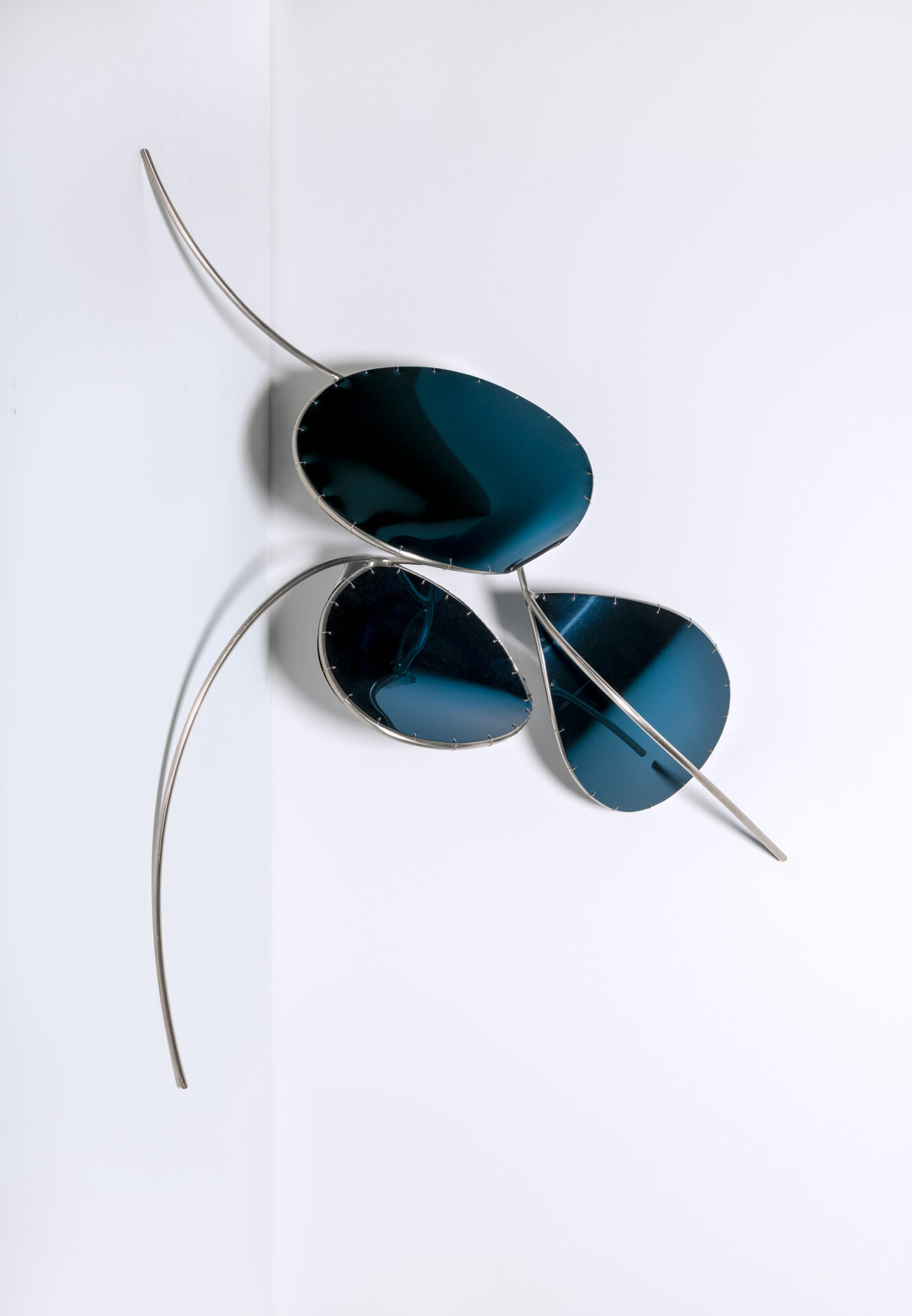Heir to the work of sculptors like James Turrell and Anish Kapoor, Blanca Muñoz has created a personal style which seeks its inspiration in the characteristic forms of astrophysics and botany, as well as in the artist’s interest in moulding matter arranged in a space without gravity, resulting in luminous, versatile structures, which maintain an equilibrium between strength and fragility.
Trained in Rome, Mexico City and London, she showed an affinity from the beginning of her career for astrophysics and for the positions of the stars, a subject that has permeated all her work. In Rome she discovered the River Tiber, which has been the soul of the city since its foundation, in Mexico, the sun and volcanoes, and in London she took refuge in the luxuriance of the parks. In this last city she introduced what was to become one of the main features of her work: metal rods. In her cramped London room, Blanca began to work with expanded polystyrene spheres which she perforated with a series of rods to represent the supposed distance between the galaxies. One day, she felt the need to take one of these spheres and place it in a corner of her bedroom wall. She found to her surprise that the rods that pierced them acted as hooks on the rough surface of the wall. That was the origin of those remarkable sculptures that climb up the walls.
The advent of these rods also marked the beginning of Muñoz’s work with what is perhaps her most recognisable material: stainless steel. She works this material in a wide variety of calibres and lengths and shapes it to her satisfaction until she achieves works that remind us of the nebulae she so much admires in the cosmos. It also produces a very characteristic gleam, especially in her monumental sculptures, a discipline she has developed over the course of her career while working on small-scale sculptures. The fact is that in many cases these monumental works have a smaller maquette, in which Muñoz explores all the possibilities of this heavy, rigid material that in her hands seems light and ductile.
We can find monumental public sculpture by Blanca Muñoz in Madrid, specifically the group made up of four pieces that she created for the Plaza de España, as well as Géminis at the Normal Foster Tower and Leónidas at Príncipe Pío Station. There are also works of hers in the streets of Malaga (Panta rei), Badajoz (Eclíptica) and Bilbao (Perseidas II in the Parque de la Curva de Elorrieta, 2004).
The Hortensia Herrero collection contains a piece by Blanca Muñoz entitled Trébol, in which, as well as steel, we see the blue colour she has incorporated into many of her works, because, as she herself explains, it is the colour of the cosmos.
